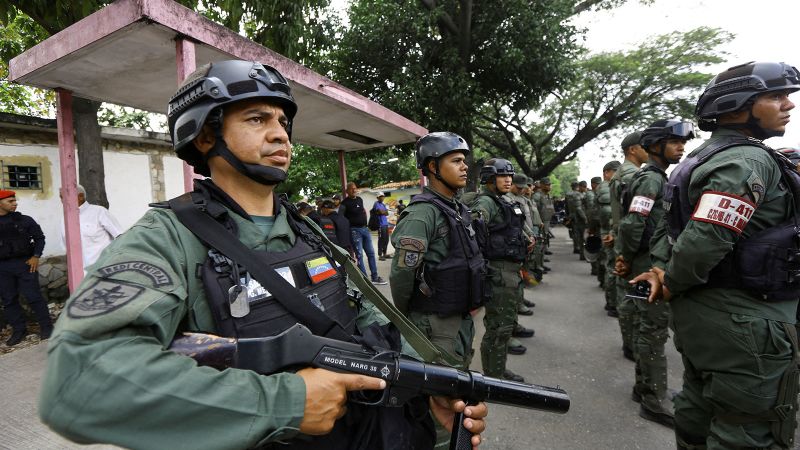Venezuela has placed its armed forces on high alert amid rising tensions with the United States, announcing a "massive deployment of ground, aerial, naval, riverine, and missile forces." This escalation follows the arrival of the USS Gerald R. Ford Carrier Strike Group—a significant development that Caracas views as a potential precursor to a U.S. invasion aimed at toppling President Nicolás Maduro.
The order, issued by Defense Minister Vladimir Padrino López, includes the participation of police, militias, and citizens' defense units as part of nationwide military exercises involving nearly 200,000 personnel. The move represents one of the most critical confrontations between Washington and Caracas in recent years, with both sides holding contrasting views on their defensive postures. President Donald Trump's administration has justified its regional buildup as part of operations to disrupt illicit drug trafficking and protect the homeland. In contrast, Venezuelan officials accuse the U.S. of harboring imperialistic intentions.
The military standoff presents a dangerous situation, with the risk of escalating into open conflict palpable. Maduro sees the threat of U.S. aggression as an opportunity to galvanize support amidst internal unrest and increasing international isolation following his disputed 2024 reelection. López emphasized that the armed forces' exercise aims to demonstrate Venezuela's readiness to respond to any "imperialist aggression," showcasing the country's defensive capabilities with ground troops, air defense systems, missile units, and maritime patrols.
To bolster coordination between civilians and the armed forces, Venezuela's National Assembly passed a new defense law aimed at unifying command and enhancing preparedness amid growing regional tension. The Ministry of Defense highlighted that the maneuvers are designed to protect national sovereignty and deter any potential U.S. military intervention. To lend further support, the government mobilized citizen militias and police units to collaborate with the military in strategic regions across the country.
Simultaneously, the Pentagon confirmed the entry of the Gerald R. Ford Carrier Strike Group into the Caribbean under U.S. Southern Command, comprising over 4,000 sailors, tactical aircraft, and accompanying warships. The U.S. has expanded troop deployments and training operations in nearby territories, including Puerto Rico, El Salvador, Panama, and Trinidad and Tobago. The deployment of the strike group comes after a series of airstrikes targeted alleged drug-trafficking vessels, with Trump hinting at potential "land strikes" in the future.
The U.S. Southern Command cUSSOUTHCOMc oversees a vast operational zone covering Latin America and the Caribbean, emphasizing Washington's expansive military presence in the region. Venezuela's Defense Minister López stated, "The aggression will be responded to with national unity. We are ready here; we don't want war." U.S. Defense Secretary Pete Hegseth reiterated the commitment to continue vessel strikes on narco-terrorists to protect American citizens.
As both the U.S. and Venezuela maintain their defensive postures in the Caribbean, tensions continue to escalate. With opposing forces positioned across the region, the situation remains critical, requiring diplomatic finesse to prevent any inadvertent actions that could lead to direct confrontation.
In this delicate geopolitical dance, the spotlight is on the potential consequences of miscalculations and misinterpretations between the two nations. As the security environment in the Caribbean remains fluid, the international community watches closely with concerns about the trajectory of events. Only time will tell whether dialogue and diplomacy prevail or if heightened tensions lead to a more significant escalation.


